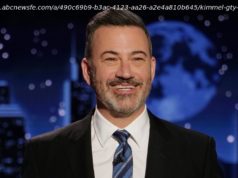How Avengers: Infinity War poses questions about evolution, genetics, and artificial intelligence.
Shane Campbell-Staton was deep into his grad school dissertation on the evolution of the green anole lizard when he started having intense dreams about the scientific origins of various superheroes.
“I was reading comic books and at night and then doing hardcore biology research by day,” he said. “The two started to cross over in my brain.”
Campbell-Staton, now an evolutionary biologist at the University of Illinois Champaign-Urbana and the University of Montana Missoula and a National Science Foundation postdoctoral fellow, couldn’t stop thinking about the evolutionary origins of X-Men’s mutants, Thor’s ability to manipulate electricity, or what organic material made up Spider-Man’s webs. “[Comics] actually give us this really fascinating universe to explore the limits of form and function in the natural world,” he said.
In December, Campbell-Staton launched a podcast, The Biology of Superheroes, to explore these topics along with co-host Arien Darby, a marketing manager at Warner Bros. Entertainment Group. In the five episodes of the show they’ve released so far, the pair has tackled the science behind Spider-Man’s silk, the Flash and the future of evolution, and Jurassic Park and the biology of de-extinction.
To mark today’s release of Marvel’s Infinity War, which features an expansive roster of characters from the Marvel Universe, I called Campbell-Staton to discuss the taxonomy of superheroes in the latest film. This interview has been lightly edited and condensed.
What inspired you to create this podcast with such a unique approach to comic book superheroes?
This started for me when I was writing my dissertation as a graduate student. I got to a point where I was pretty stressed out and really wanted an escape from the rigors of academia. I used comic books as a bit of a stress reliever.
I was reading comic books and at night, and then doing hardcore biology research by day. The two started to cross over in my brain, and I started having really weird dreams. I would have all these really interesting questions pop into my head about how biology related to what I was reading in comics and science fiction in general.
I decided to teach a small course at Harvard during the winter term, and we had a dozen undergraduates. We sat down for two weeks and talked about the biology of superheroes, zombies, and all sorts of science fiction. It was really fun, and we dug really deep into some classic questions in biology and everybody had a really good time with it.
I decided to team up with a good friend of mine from college, Arien Darby, who’s now a marketing manager at Warner Bros, Entertainment Group. He is a comic book head from back in the day. He brought the science fiction and I brought the science, and we merged the nerd multiverse to explore the biology of superheroes in this podcast. It’s been really, really fun.
I love the concept. Infinity War is coming out on Friday. There’s obviously a ton of different types of superheroes — what are the classifications, the sort of taxonomy of different Avengers superheroes?
Infinity War is probably the most extensive cast of superheroes that we’ve seen in one place at one time in any movie. And as a biologist looking at the roster of heroes that makes up the Avengers, it’s really interesting because I have this deep-seated want to sort of categorize them into different biological categories.
Let’s start with the first category: the elite athletes. These are superheroes like Hawkeye and Black Widow. They’re extremely well-trained, obviously they have endurance, extreme fighting abilities, they’re probably much stronger than most people, but they don’t have any “superpowers,” so to speak.
When we’re thinking about these characters, it brings up the question: What are the relative roles of their genetics versus how they trained? We know that there are certain genetic variants that float around human populations that give some individuals the ability to perform remarkable feats. There are things like knockout mutations that occur in certain genes that allow for increased muscular size and strength and endurance.
Olympic athletes, people who are able to perform extreme feats, have a tendency to have these sort of genetic variants that allow them to realize aspects of performance that most people just can’t. But that’s just the blueprint. You can’t just sit on a couch your entire life. Training provides the stimulus that the basic blueprint, your genome, needs to build an elite athlete. Or in the case of Black Widow or Hawkeye, a superhero.
Would someone like Captain America also fit into that category?
I would put Captain America into that subset of heroes that then use bioengineering and modification to achieve even more extreme results. So what Hawkeye and Black Widow have attained through training and the genetic lottery, other heroes are able to get through scientific experimentation and luck, or I guess tragedy on how you look at it.
In the comics, Steve Rogers [Captain America’s alter ego] was a frail, sickly little human being. But then he’s given this super-soldier serum and becomes, essentially, the pinnacle of athleticism, way beyond even the elite athletes. In the real world, scientists are busy trying to perfect ways to manipulate genomes in order to cut and paste different copies of genes into all types of organisms, including humans. The most famous of these techniques right now, I believe, is probably the CRISPR/Cas9 system [a new technology that can edit gene sequences].
In the case of Captain America, those same genes that maybe Black Widow and Hawkeye have — specific genetic variants that naturally gives them athletic skills — can, using bioengineering, be inserted into the genes of Steve Rogers in order to give him super strength, endurance, and speed.
It’s cool to think about manipulating these genes to create superheroes, but in the real world, the technology and knowledge of how genes contribute to athletic performance could be the key in helping to cure genetic diseases like muscular dystrophy and cardio-respiratory ailments.
Iron Man seems like he’s a little bit different in that his “power” is access to technological tools.
Right. Iron Man, War Machine, Falcon, Winter Soldier — they have all extended the human genotype through technology. Iron Man’s armor acts as an exoskeleton, but it’s also a prosthetic. The Arc Reactor powers that exoskeleton and also keeps the shrapnel out of Tony Stark’s heart, very literally keeping him alive.
Iron Man, I think, speaks to contemporary society in a really interesting way, in terms of this sort of inherent want to use technology to better ourselves. In terms of this physical betterment, prosthetics research is a really exciting field right now. We see a lot of companies have developed a basic exoskeleton, which would be, more or less, the equivalent of the very first version of Tony Stark’s armor that he built himself in the very first Iron Man movie.
These exoskeletons in the real world are being used to help people move heavy objects and things like this, but they’re being used to develop high-performing appendages for amputees and disabled people. That advancement has occurred to the extent where the question is now, “Do prosthetics actually give an unfair advantage?” So we saw, in the London Olympics when Oscar Pistorius — having someone with artificial limbs be able to run at the very highest level of human performance was a huge hallmark.
Even more recently, Paralympic jumper Markus Rehm was actually denied a bid for the 2016 Olympics in Rio because it was unclear whether or not those carbon fiber blades [used for his amputated right leg] actually gave him an unfair advantage.
Home
United States
USA — Science Avengers: Infinity War’s superheroes, explained by an evolutionary biologist






